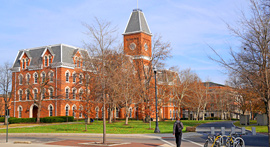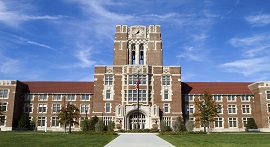Public Relations
A Day in the Life of a Public Relations
At its core, public relations is about cultivating, influencing, engaging and maintaining a relationship with key stakeholders to contribute to the way an organization is perceived.
There are as many different definitions of public relations as there are public relations professionals. No two public relations jobs are the same. According to the Public Relations Society of America (PRSA), job descriptions can include responsibilities such as media relations, marketing communications, social media, community relations, special events, crisis management, research, and employee communications.
On a daily basis, the PR professional will typically engage in dialogue and interact with both internal business leaders and executives as well as the broader constituents affected by a company’s product and policies: consumers, shareholders, employees and the media.
A typical day may involve keeping the public informed about the activities of the organization, fielding press inquiries regarding a specific issue, pitching the media about a specific corporate initiative or disseminating information and news releases externally on behalf of the company. In a government agency, public relations may fall under the area of public affairs whereas the role will involve explaining policies, managing campaigns and navigating via political channels. Regardless, the successful PR person will spend a large majority of their day being an effective communicator—in print, in person, on the phone and via social media and digital channels.
The content of the work is fluid and there isn’t necessarily a routine day for a PR practitioner. Unforeseen challenges may arise whereby a significant issue, organizational change, material news development or crisis communications will take precedence over existing daily tasks—monitoring for news, maintaining contacts with journalists, setting up speaking engagements, producing talking points and messaging, responding to inquiries and speaking directly to the press on behalf of a client.
A PR person must be keenly aware of current events, industry trends and influences, both geopolitically and economically, upon the news cycle to understand how and when to pitch to media and the quality of stories that will garner the public’s attention. It takes a combination of analysis and strategy to get your client’s message and name in the public eye. With the proliferation of technology, increase in social media and sophistication of digital tools, communications initiatives are more directly measured and tied to business outcomes—creating more opportunity for the public relations professional to collaborate with areas of marketing and advertising as well as expand their traditional responsibilities.
Paying Your Dues
Colleges and universities offer varied degrees in public relations, communications and journalism. A solid liberal arts and/or English degree also can provide a great background to enter into the public relations field. A desirable candidate will ultimately need to be a good writer and effective communicator.
Work in the field of public relations requires familiarity with a wide variety of topics. Any major that teaches you how to read and write intelligently will lay a good foundation for a career in public relations. An internship in public relations is also a good way to get some practical, hands-on experience in the field.
Present and Future
Spanning a variety of industries and organizational settings, today’s PR professionals utilize a suite of communications and marketing disciplines to offer critical insights, develop differentiated positioning and deliver an organization’s message across multiple channels.
The more traditional requisite public relations skills set includes: reputation and crisis management, media relations, news releases, press conferences, procuring media interviews, media training, and serving as corporate spokesperson.
With the proliferation of technology, increase in social media and sophistication of digital tools, communications initiatives are more directly measured and tied to business outcomes—creating more opportunity for public relations experts. Many public relations executives have expanded job responsibilities to include brand journalism, integrated marketing communications, analytics and sophisticated community management platforms.
Quality of Life
PRESENT AND FUTURE
FIVE YEARS OUT
TEN YEARS OUT
Featured MBA Programs For You
Are you seeking the right type of b-school? Connect with MBA programs seeking candidates like you.
Find Colleges Matched to Your Interests
Explore schools of all sizes, ranked colleges, city and big-campus schools and more.
Explore Graduate Programs For You
Connect with master’s programs around the country to get an edge over the competition.
Featured MBA Programs For You
Are you seeking the right type of b-school? Connect with MBA programs seeking candidates like you.
Find Colleges Matched to Your Interests
Explore schools of all sizes, ranked colleges, city and big-campus schools and more.
Explore Graduate Programs For You
Connect with master’s programs around the country to get an edge over the competition.
Featured MBA Programs For You
Are you seeking the right type of b-school? Connect with MBA programs seeking candidates like you.
Find Colleges Matched to Your Interests
Explore schools of all sizes, ranked colleges, city and big-campus schools and more.
Explore Graduate Programs For You
Connect with master’s programs around the country to get an edge over the competition.



